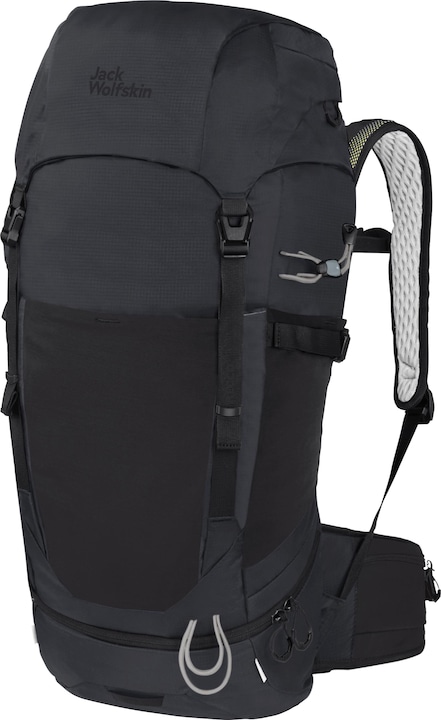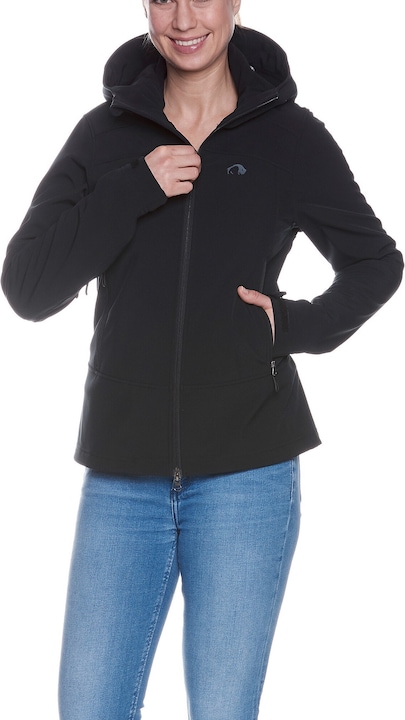

How Recco helps rescue missing mountaineers
Recco reflectors integrated into outdoor clothing and equipment allow casualties stranded in snow, mountains or forests to be recovered more quickly. The catalyst for this life-saving innovation? A deadly avalanche.
The all-important event may have occurred more than 40 years ago, but mountain sports enthusiasts would feel its impact on skiing, hiking and biking for years to come.
So what played out on the mountainside that day? It was 1973, and Magnus Granhed had just graduated from Stockholm’s Royal Institute of Technology. He and a buddy had decided to go on a ski trip to Åre in Northern Sweden. But the fun soon turned to tragedy when an avalanche struck, burying Magnus’s friend in the snow. Magnus, then aged 26, began frantically searching for his friend – to no avail. By the time they found him, he was dead.
That day changed Magnus’s life. «If only we’d found him a little bit sooner, we might have been able to save him,» he told Galaxus in an interview at the Outdoor by ISPO trade show.
Ever since that fateful day, Magnus has been obsessed with locating people in distress – even under snow and in difficult terrain. Making use of his background in engineering, he focused on creating a radar that would work through ice and snow and not be deflected by metal. After some promising trials and prototypes, Magnus founded Recco in 1983.
Recco finds a long-standing partner in Air Zermatt
He quickly realised he needed an experienced partner to make his idea a reality. Directing his focus towards Switzerland, Magnus caught the interest of Air Zermatt. What resulted was a 40-year collaboration that’s still going strong. «Beat Perren from Air Zermatt and Bruno Jelk from Zermatt Mountain Rescue played a crucial role in the development of the Recco system,» Magnus says. Recco search technology is now used by more than 900 ski resorts and mountain rescue teams in 32 countries, including Australia, Nepal, Chile and the USA. Lauterbrunnen-based helicopter firm Air Glaciers also recently started using Recco devices.

Source: Recco
The rescue device is half detector, half reflector
What makes this technology stand out is the way the active detector and passive reflector interact. Picture, if you will, a torch whose light is only reflected by a certain mirror. With Recco reflectors, however, this optical signal is translated into an acoustic one. The louder the signal, the closer the searcher is to the person in need of help.

Source: Recco/Anton Enerlov Photography
These small, flat reflectors are now integrated into trousers, jackets, bike and ski helmets, protectors, climbing harnesses and backpacks. To do this, Recco works with more than 150 outdoor brands, including Helly Hansen, Jack Wolfskin, Arcteryx, Tatonka, Atomic, Pinewood and Scarpa, as well as the Swiss brands Odlo, Ayaq and X-Bionic. Each of these brands makes at least one garment or piece of equipment featuring a Recco reflector. The Swiss brand Suplest is the first to fit a bike shoe with a Recco reflector.
Products that’ll help you be found if you ever go missing are marked with the Recco label. Besides this, you can also buy the reflectors separately and attached them to your backpack or helmet. You can also get a Recco belt with a built-in reflector. «It’s important to us that as many people as possible have the reflectors on them so that they can be found in an emergency,» says Magnus’s daughter Julia Granhed, who also works as Recco’s Marketing Manager.

Source: Siri Schubert
A key thing to be aware of is that the reflectors are passive. In other words, they don’t emit a signal and don’t need any kind of batteries, GPS or mobile phone reception to work. Consisting of a diode and an antenna, the manufacturer says the sensors last a lifetime, as long as they’re not physically damaged. People in distress can only be found if rescuers use the corresponding search device. If you’re worried about unwanted tracking, there’s no need. As only professional rescuers with the proper equipment can pick up the reflectors’ signal, stalkers don’t stand a chance.

Source: Recco
Are Recco products really necessary in the era of avalanche transceivers, the Garmin inReach and smartphones and smartwatches kitted out with emergency call functions? «Anything that increases the chances of finding people in distress quickly is good,» Julia says. «People should have all these devices on them.» She adds that Recco serves as an extra tool – a lifeline to the professional rescue team.

Source: Recco
Unlike with technologies such as thermal imaging cameras, the reflectors’ ability to work under snow and on difficult terrain means there’s no danger of wild animals being mistaken for missing people. People wearing clothing fitted with Recco reflectors can also be found if they’re unable to communicate their position, for example, due to being unconscious. Even so, emergency services need to be called first to initiate the search – whether the person is wearing Recco reflectors or not. This is where the automatic emergency call systems on smartphones come in handy.
The devices are getting lighter and more versatile
While the early avalanche transceivers of the 1980s weighed in at around 20 kilogrammes, there are now 900-gramme wearable transceivers allowing victims whose clothing or gear is equipped with a Recco reflector to be found.

Source: Recco
Until 2016, the devices were mainly used for avalanche rescue missions. These days, however, there are detectors for locating casualties in forests, mountains and fog. As well as the portable devices, spherical detectors mounted on helicopters have been in use since 2015. Like the smaller devices, they give out a signal of a specific wavelength. If this signal hits a reflector on a jacket, shoe, backpack or bike helmet, it’s reflected back at exactly the same frequency. This makes mix-ups or signal deflections almost impossible.
Recco SAR (Search and Rescue) detectors attached to helicopters cover a large area. Flying at an altitude of around 100 metres, they can cover an area of one square kilometre within six minutes in a 100-metre search corridor. The portable detector can locate a missing person within 30 metres of an avalanche.

Source: Recco/Michael Portmann
The more people out and about in forests and in the mountains, the greater the risk that someone will have an accident. Julia from Recco says rescuers are now also very active during summer and autumn, when bikers and hikers are out in droves. According to Swissinfo, 32 people have died in mountain accidents so far this year in Valais alone – and hiking season is still in full swing.
Statistics gathered by the Swiss Alpine Club reveal how crucial being found can be. In 2022, 3,668 people in the Swiss Alps and Jura Mountains had to be either rescued or recovered. 109 mountaineers suffered fatal accidents. Not only that, but there was a sharp increase in the number of people falling into crevasses. Seventy of these incidents occurred in 2022, almost double the ten-year average.
For many people who run into difficulty in the mountains or vast forests, wearing a small reflector can speed up the rescue process and maybe even save lives. And since they’re already integrated into clothing or gear and don’t need to be charged or switched on, you’ll be safer without making any extra effort.
Header image: ReccoResearch diver, outdoor guide and SUP instructor – I love being in, on and around water. Lakes, rivers and the ocean are my playgrounds. For a change of perspective, I look at the world from above while trail running or flying drones.




